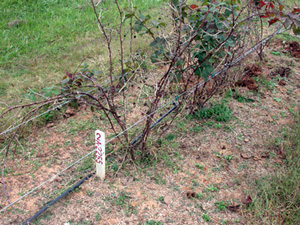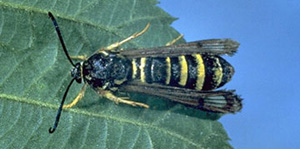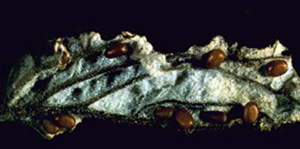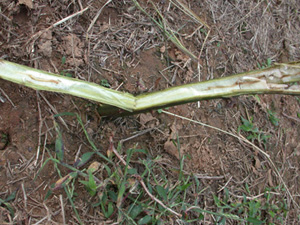Crown Borers damage floricanes at their base, causing them to wilt and die. Entire plants may be killed.

Photo courtesy D. Johnson, University of Arkansas
Look for burrows at the base of canes and in the crown and roots.

Photo courtesy D. Johnson, University of Arkansas
Adult crown borers are clear-winged moths that resemble yellow jackets. They emerge from July to September.

Photo courtesy D. Johnson, University of Arkansas
Crown borer eggs are laid singly on the undersides of leaves.

Photo courtesy D. Johnson, University of Arkansas
Larvae burrow down individual canes into the crown. A single larva may kill several canes on one plant.

Photo courtesy D. Johnson, University of Arkansas
Dark red pupal skins attached to the lower section of canes/crown are also a characteristic sign of crown borer infestation.

Photo courtesy D. Johnson, University of Arkansas
More information:
- Raspberry Crown Borer– (University of California)
- Raspberry Crown Borer – (University of Kentucky)
- Raspberry Borers – (University of Connecticut)
Use these resources if you need additional help with diagnosis and to find solutions to your problem.


